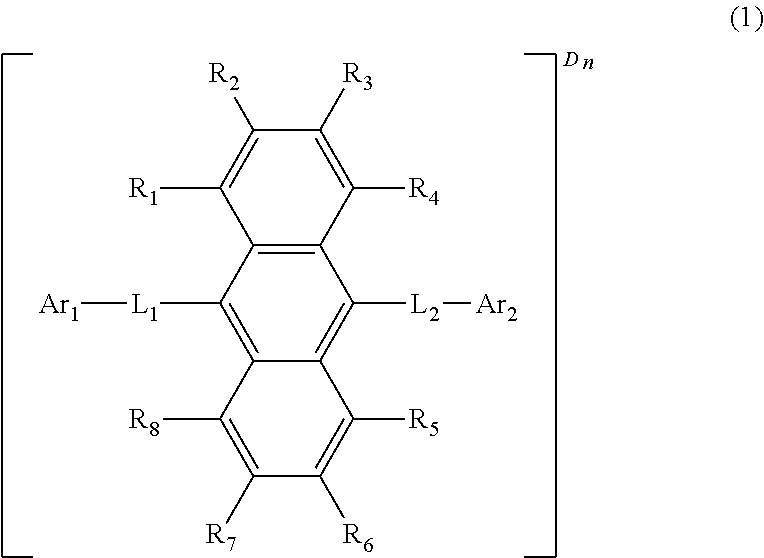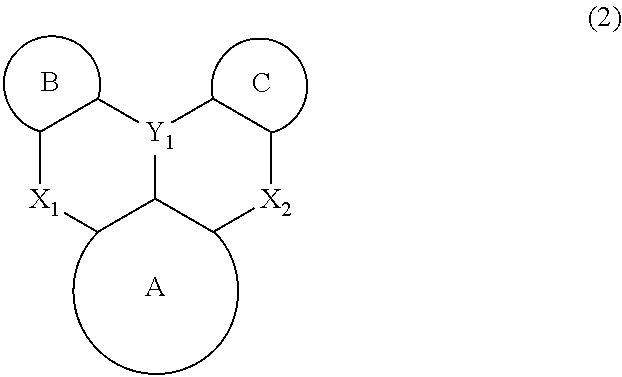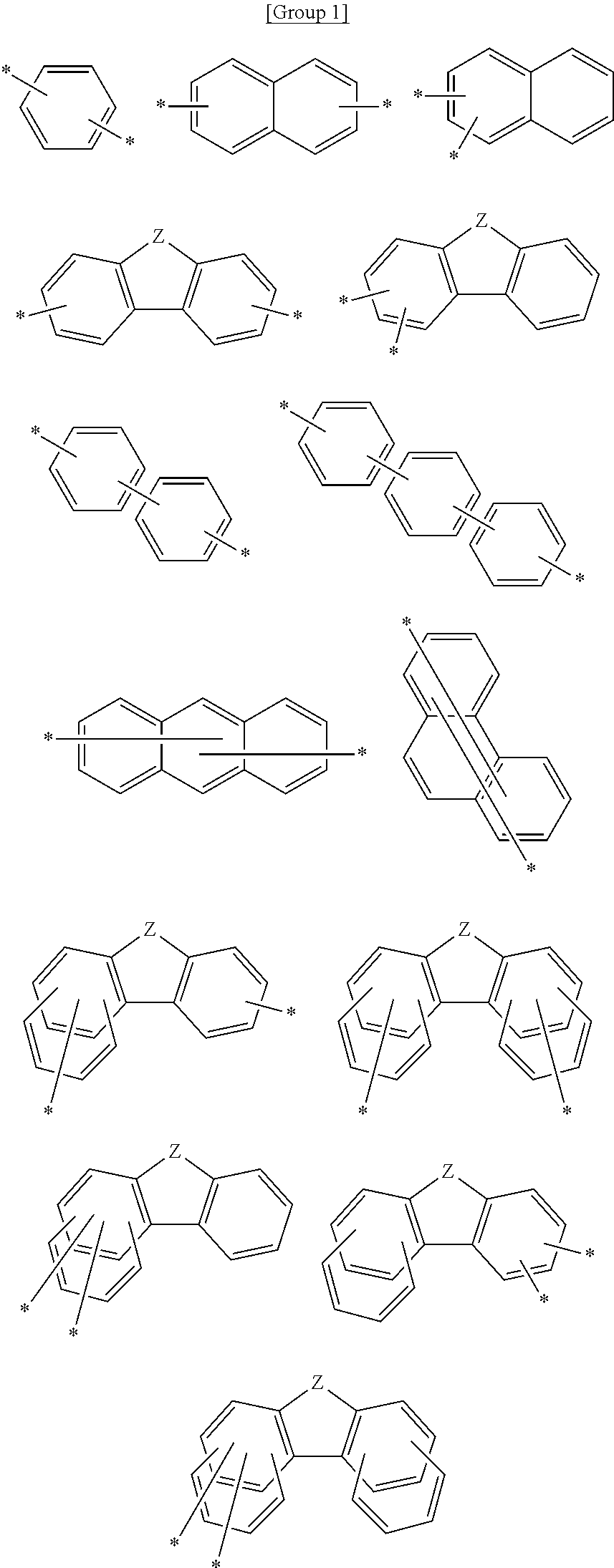A plurality of light-emitting materials and organic electroluminescent device comprising the same
a technology of light-emitting materials and organic electroluminescent devices, which is applied in the direction of luminescent compositions, semiconductor devices, chemistry apparatuses and processes, etc., can solve the problems of reducing the development period of oleds, reducing the application range of oleds, and difficulty in obtaining deep blues with high color purity, etc., to achieve the effect of reducing the scope of disclosure and improving lifetime properties
- Summary
- Abstract
- Description
- Claims
- Application Information
AI Technical Summary
Benefits of technology
Problems solved by technology
Method used
Image
Examples
example 2
on of Compound H-58
[0094]
[0095]In a flask, 0.5 g of compound BH-3 (8.3 mmol) and 100 mL of benzene-D6 were added and heated to dissolve all of compound BH-3. The reaction product was cooled to room temperature, and 4.4 mL of triflic acid (49.8 mmol) were added. The mixture was stirred for 2 hours and 30 minutes, and then 20 mL of heavy water were added. The mixture was stirred for 10 minutes, and then neutralized with K3PO4 aqueous solution. The organic layer was extracted with dichloromethane, and residual moisture was removed using magnesium sulfate. The obtained organic layer was distilled under reduced pressure and separated by column chromatography to obtain 1.5 g of compound H-58 (yield: 41.3%).
MWM.P.H-58437.61279.2° C.
example 3
on of Compound H-128
[0096]
[0097]In a flask, 5 g of compound BH-5 (8.58 mmol) and 150 mL of benzene-D6 were added and heated to dissolve all of compound BH-5. The reaction product was cooled to 40° C., and 5 mL of triflic acid (56.50 mmol) were added. The mixture was stirred at 40° C. for 3 hours, and then 10 mL of heavy water were added. The mixture was stirred for 10 minutes, and then neutralized with K3PO4 aqueous solution. The organic layer was extracted with dichloromethane, and residual moisture was removed using magnesium sulfate. The obtained organic layer was distilled under reduced pressure and separated by column chromatography to obtain 3.5 g of compound H-128 (yield: 66.8%).
MWM.P.H-128610.75262° C.
example 4
on of Compound H-22
[0098]
[0099]In a flask, 7 g of compound BH-6 (13.82 mmol) and 210 mL of benzene-D6 were added and heated to dissolve all of compound BH-6. The reaction product was cooled to 40° C., and 5 mL of triflic acid (79.11 mmol) were added. The mixture was stirred at 40° C. for 3 hours, and then 14 mL of heavy water were added. The mixture was stirred for 10 minutes, and then neutralized with K3PO4 aqueous solution. The organic layer was extracted with dichloromethane, and residual moisture was removed using magnesium sulfate. The obtained organic layer was distilled under reduced pressure and separated by column chromatography to obtain 1.8 g of compound M-22 (yield: 24.5%).
MWM.P.H-22531.2598° C.
Example 5: Preparation of Compound H-76
[0100]
[0101]In a flask, 9.1 g of compound BH-9 (16.64 mmol) and 333 mL of benzene-D6 were added and heated to dissolve all of compound BH-9. The reaction product was cooled to 40° C., and 9.1 mL of triflic acid (102.84 mmol) were added. The m...
PUM
| Property | Measurement | Unit |
|---|---|---|
| pressure | aaaaa | aaaaa |
| thickness | aaaaa | aaaaa |
| thickness | aaaaa | aaaaa |
Abstract
Description
Claims
Application Information
 Login to View More
Login to View More - R&D
- Intellectual Property
- Life Sciences
- Materials
- Tech Scout
- Unparalleled Data Quality
- Higher Quality Content
- 60% Fewer Hallucinations
Browse by: Latest US Patents, China's latest patents, Technical Efficacy Thesaurus, Application Domain, Technology Topic, Popular Technical Reports.
© 2025 PatSnap. All rights reserved.Legal|Privacy policy|Modern Slavery Act Transparency Statement|Sitemap|About US| Contact US: help@patsnap.com



